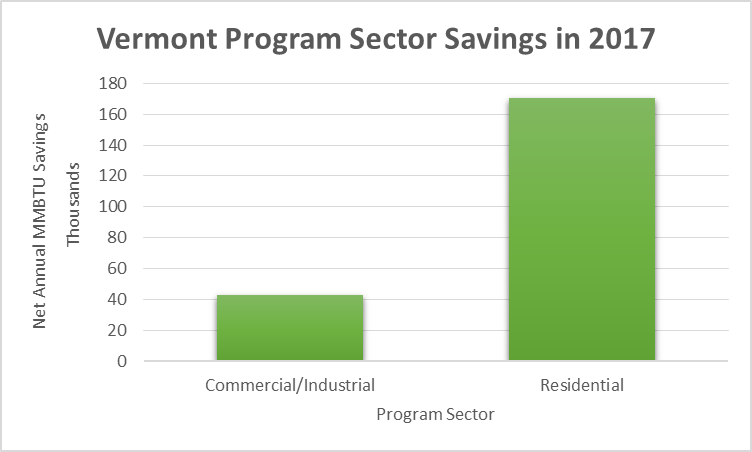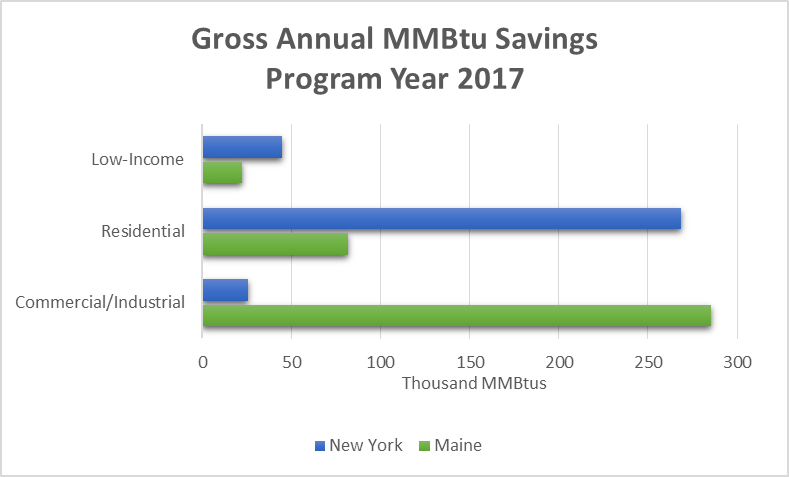
By Samantha Caputo | Tue, August 13, 19
Welcome to the latest REED Rendering issue, a series of blogs where we bring your attention to interesting trends that we see in the data and the stories behind those trends.
It is an exciting time for energy efficiency programs. States throughout the NEEP region are prioritizing climate goals and working to decarbonize the economy. States are doing this by integrating zero carbon energy, deep energy efficiency, and strategic electrification into their plans. They are developing policies and programs to streamline this integration process.
NEEP established REED in 2011 to serve as a regional platform for the state electric and gas energy efficiency programs in the Northeast and Mid-Atlantic states to consistently report savings and other program-level data. REED currently contains data for the following 10 states: Connecticut, Delaware, the District of Columbia, Maine, Maryland, Massachusetts, New Hampshire, New York, Rhode Island, and Vermont. By gathering this information in one central repository, REED is used to inform state and regional policies, as well as state benchmarking and other research and analysis.
REED is a unique resource that shows the annual and cumulative impact of ratepayer funded energy efficiency programs in the Northeast and Mid-Atlantic region. At this time, REED includes seven years of energy efficiency data (2011 – 2017) and is a tool to support state and utility program and policy planning by offering trend analysis and granular level views of energy efficiency data. As states prioritize fuel-switching policies, it is important for REED to harness this information and help states identify the policies and programs that meet their climate and energy goals.
For instance, in Massachusetts, An Act to Advance Clean Energy was signed into public law in 2018. This act has provisions that will impact the three-year planning process by adding energy storage, active demand management technologies, and strategic electrification as eligible programs under energy efficiency programs. The act also values programs that result in customers switching to renewable energy sources or other clean energy technologies to the energy efficiency plans. In response to these provisions, the 2019-2021 energy efficiency plan includes energy savings from all fuels, including fuel switching MMBtus, and MWs of active demand management including storage for summer and winter peak.
Furthermore, states are increasingly introducing legislation related to fuel-switching and strategic electrification. Maine enacted a law requiring 80 percent of electricity sales sourced from renewable energy by 2030 and 100 percent by 2050 (LD1494). The Maine legislature also set the bar for transitioning the heating and cooling market away from fossil fuels to renewable thermal technology by setting a target of installing 100,000 high performance air source heat pumps (ASHPs) by 2025.
NEEP intends to update REED to better assist Northeast and Mid-Atlantic states to set, achieve, and update energy efficiency goals. REED can serve as a tool to comparatively track state by state progress in achieving energy efficiency savings goals along with associated impacts important to state energy, economic, and environmental goals.
 REED currently primarily collects energy savings data in kWh and therms, but also has a column for other fuels (MMBtu) data. Few states report data in this column. With fuel-switching programs becoming more prominent in energy efficiency plans, we expect data collection in MMBtus to increase in the next few years. Vermont is the only state that reported net annual savings in MMBtu for program year 2017, while Maine and New York reported gross annual MMBtus. It is exciting to see how this transition will play out. We will continue to see New York MMBtu savings grow in New York as Governor Cuomo set an ambitious 2025 statewide energy efficiency target for 185 trillion Btus of cumulative annual site energy savings. This is over two million cars driven for one year removed from the road! A sub-target for this includes 30,000 GWh reduction from forecasted electricity savings in 2025.
REED currently primarily collects energy savings data in kWh and therms, but also has a column for other fuels (MMBtu) data. Few states report data in this column. With fuel-switching programs becoming more prominent in energy efficiency plans, we expect data collection in MMBtus to increase in the next few years. Vermont is the only state that reported net annual savings in MMBtu for program year 2017, while Maine and New York reported gross annual MMBtus. It is exciting to see how this transition will play out. We will continue to see New York MMBtu savings grow in New York as Governor Cuomo set an ambitious 2025 statewide energy efficiency target for 185 trillion Btus of cumulative annual site energy savings. This is over two million cars driven for one year removed from the road! A sub-target for this includes 30,000 GWh reduction from forecasted electricity savings in 2025.
As more ratepayer funded programs look to evolve their programs, things to consider include:
- Taking a fuel-neutral approach;
- Incorporating new metrics to measure success of programs, such as emissions efficiency;
- Providing opportunities for new pilots and innovatively-designed programs to incorporate electrification and distributed energy resources;
- Targeting programs to serve low-income households at least as much as other households, if not more;
- Aligning utility financial incentives with environmental, climate, and other relevant public policy goals. Electric utility incentives should allow for fuel-switching within existing energy efficiency programs.

